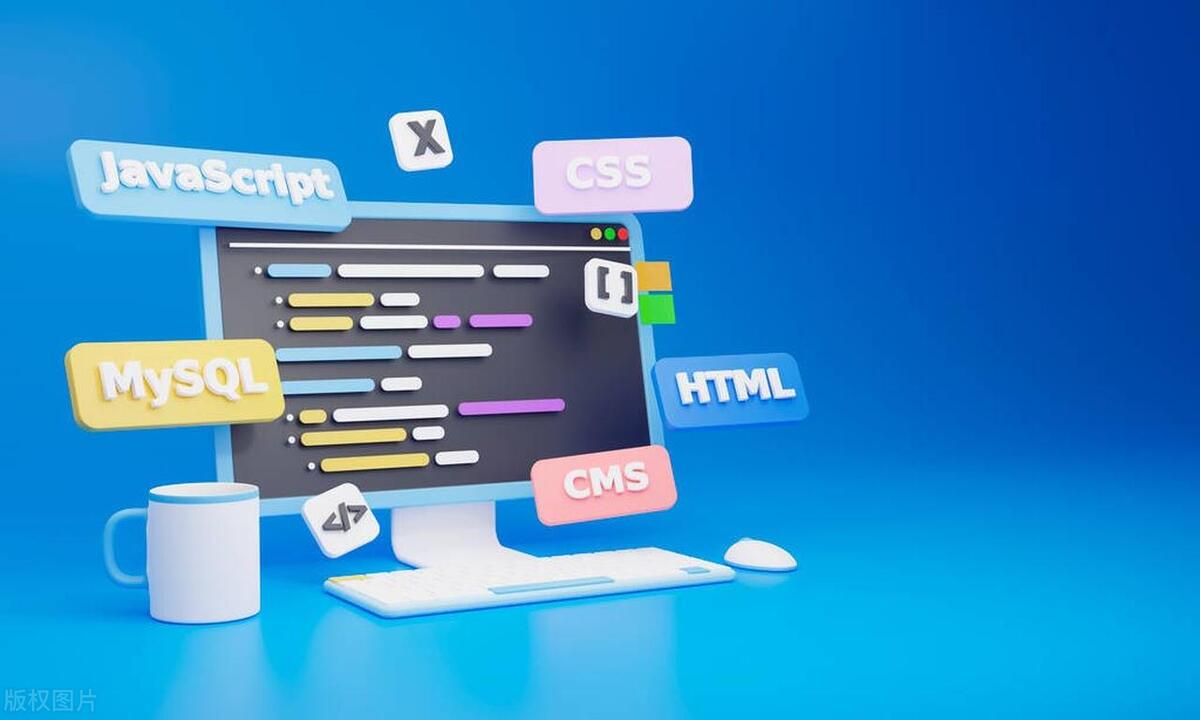Implementing Effective Responsive Design with CSS Media Queries
Jul 05, 2025 am 01:35 AMMedia queries are CSS3 features that are used to dynamically adjust styles according to device attributes to ensure responsive design. It realizes different screen adaptation through @media rules combined with breakpoints (such as max-width, min-width). Common breakpoints include: 1. Mobile phone vertical screen: max-width: 480px; 2. Mobile phone horizontal screen or small tablet: 481px-768px; 3. Tablet and above: ≥769px. There are two ways to organize structure: centralized management by breakpoint is suitable for small projects, and decentralized management by components is conducive to maintenance of large projects. When using it, you should follow the mobile priority principle, adopt relative units, avoid excessive breakpoints, and consider high resolution and printing style adaptation, and cooperate with real machine testing to optimize the experience.

In web design, ensuring that the website can be displayed well on different devices is the key to improving the user experience. Responsive design achieves this through CSS Media Queries, which can dynamically adjust page layout and style according to the characteristics of the device.

What is media inquiry?
Media queries are part of CSS3, allowing you to apply different style rules based on the characteristics of the device. The most common use is to set breakpoints based on the screen width, which provides an optimized view for devices such as phones, tablets and desktops.

You can write a basic media query like this:
@media (max-width: 768px) {
/* Style for devices with a maximum width of 768px*/
}A common practice is to use several key breakpoints, such as:

- Mobile phone vertical screen:
max-width: 480px - Mobile phone horizontal screen or small tablet:
min-width: 481pxto768px - Tablet and above:
min-width: 769px
Of course, more detailed control can be carried out in combination with equipment direction, resolution and other conditions.
How to organize media query structure?
A good structure facilitates post-maintenance and expansion. There are usually two ways:
Centralized management by breakpoint : All styles for a certain screen size are centralized in a media query block.
@media (max-width: 768px) { .header { font-size: 16px; } .nav { display: none; } }Decentralized management by component : Each component contains its own responsive style, which is convenient for modular development.
.nav { display: flex; } @media (max-width: 768px) { .nav { display: none; } }
The former is suitable for small projects, while the latter is more suitable for large projects or using CSS preprocessors such as Sass.
Practical tips and precautions
- Mobile priority principle : first write the mobile style, and then gradually enhance the large-screen experience, which is in line with the trend of modern web development and is also conducive to performance optimization.
- Use relative units : try to replace
pxwithemorremto make the font size and layout more flexible. - There are many test tools : don’t rely solely on browser scaling. It is recommended to use real-machine tests or emulators to view the actual results.
- Avoid too many breakpoints : Although many media queries can be defined, it is easier to maintain. Usually 2 to 4 major breakpoints are enough.
- Consider high-resolution screens : high-definition pictures or icons can be loaded through queries such as
(min-resolution: 2dppx).
Last point: Don't ignore the print style
In addition to common screen adaptations, media queries can also be used for printing styles. For example, hide the navigation bar, remove the background color, adjust the font size, etc. to improve the readability of the print.
@media print {
nav, aside {
display: none;
}
body {
font-size: 12pt;
background: white;
color: black;
}
}Basically that's it. Mastering the structure and usage of media queries can make your website more professional and friendly on various devices.
The above is the detailed content of Implementing Effective Responsive Design with CSS Media Queries. For more information, please follow other related articles on the PHP Chinese website!

Hot AI Tools

Undress AI Tool
Undress images for free

Undresser.AI Undress
AI-powered app for creating realistic nude photos

AI Clothes Remover
Online AI tool for removing clothes from photos.

Clothoff.io
AI clothes remover

Video Face Swap
Swap faces in any video effortlessly with our completely free AI face swap tool!

Hot Article

Hot Tools

Notepad++7.3.1
Easy-to-use and free code editor

SublimeText3 Chinese version
Chinese version, very easy to use

Zend Studio 13.0.1
Powerful PHP integrated development environment

Dreamweaver CS6
Visual web development tools

SublimeText3 Mac version
God-level code editing software (SublimeText3)
 How does React handle focus management and accessibility?
Jul 08, 2025 am 02:34 AM
How does React handle focus management and accessibility?
Jul 08, 2025 am 02:34 AM
React itself does not directly manage focus or accessibility, but provides tools to effectively deal with these issues. 1. Use Refs to programmatically manage focus, such as setting element focus through useRef; 2. Use ARIA attributes to improve accessibility, such as defining the structure and state of tab components; 3. Pay attention to keyboard navigation to ensure that the focus logic in components such as modal boxes is clear; 4. Try to use native HTML elements to reduce the workload and error risk of custom implementation; 5. React assists accessibility by controlling the DOM and adding ARIA attributes, but the correct use still depends on developers.
 Describe the difference between shallow and full rendering in React testing.
Jul 06, 2025 am 02:32 AM
Describe the difference between shallow and full rendering in React testing.
Jul 06, 2025 am 02:32 AM
Shallowrenderingtestsacomponentinisolation,withoutchildren,whilefullrenderingincludesallchildcomponents.Shallowrenderingisgoodfortestingacomponent’sownlogicandmarkup,offeringfasterexecutionandisolationfromchildbehavior,butlacksfulllifecycleandDOMinte
 What is the significance of the StrictMode component in React?
Jul 06, 2025 am 02:33 AM
What is the significance of the StrictMode component in React?
Jul 06, 2025 am 02:33 AM
StrictMode does not render any visual content in React, but it is very useful during development. Its main function is to help developers identify potential problems, especially those that may cause bugs or unexpected behavior in complex applications. Specifically, it flags unsafe lifecycle methods, recognizes side effects in render functions, and warns about the use of old string refAPI. In addition, it can expose these side effects by intentionally repeating calls to certain functions, thereby prompting developers to move related operations to appropriate locations, such as the useEffect hook. At the same time, it encourages the use of newer ref methods such as useRef or callback ref instead of string ref. To use Stri effectively
 Vue with TypeScript Integration Guide
Jul 05, 2025 am 02:29 AM
Vue with TypeScript Integration Guide
Jul 05, 2025 am 02:29 AM
Create TypeScript-enabled projects using VueCLI or Vite, which can be quickly initialized through interactive selection features or using templates. Use tags in components to implement type inference with defineComponent, and it is recommended to explicitly declare props and emits types, and use interface or type to define complex structures. It is recommended to explicitly label types when using ref and reactive in setup functions to improve code maintainability and collaboration efficiency.
 How to handle forms in Vue
Jul 04, 2025 am 03:10 AM
How to handle forms in Vue
Jul 04, 2025 am 03:10 AM
There are three key points to be mastered when processing Vue forms: 1. Use v-model to achieve two-way binding and synchronize form data; 2. Implement verification logic to ensure input compliance; 3. Control the submission behavior and process requests and status feedback. In Vue, form elements such as input boxes, check boxes, etc. can be bound to data attributes through v-model, such as automatically synchronizing user input; for multiple selection scenarios of check boxes, the binding field should be initialized into an array to correctly store multiple selected values. Form verification can be implemented through custom functions or third-party libraries. Common practices include checking whether the field is empty, using a regular verification format, and displaying prompt information when errors are wrong; for example, writing a validateForm method to return the error message object of each field. You should use it when submitting
 Server-Side Rendering with Next.js Explained
Jul 23, 2025 am 01:39 AM
Server-Side Rendering with Next.js Explained
Jul 23, 2025 am 01:39 AM
Server-siderendering(SSR)inNext.jsgeneratesHTMLontheserverforeachrequest,improvingperformanceandSEO.1.SSRisidealfordynamiccontentthatchangesfrequently,suchasuserdashboards.2.ItusesgetServerSidePropstofetchdataperrequestandpassittothecomponent.3.UseSS
 A Deep Dive into WebAssembly (WASM) for Front-End Developers
Jul 27, 2025 am 12:32 AM
A Deep Dive into WebAssembly (WASM) for Front-End Developers
Jul 27, 2025 am 12:32 AM
WebAssembly(WASM)isagame-changerforfront-enddevelopersseekinghigh-performancewebapplications.1.WASMisabinaryinstructionformatthatrunsatnear-nativespeed,enablinglanguageslikeRust,C ,andGotoexecuteinthebrowser.2.ItcomplementsJavaScriptratherthanreplac
 What is content security policy CSP
Jul 04, 2025 am 03:21 AM
What is content security policy CSP
Jul 04, 2025 am 03:21 AM
Content Security Policy (CSP) prevents attacks such as XSS by limiting the loading source of web page resources. Its core mechanism is to set a whitelist to prevent unauthorized scripts from being executed. The steps to enable include: 1. Define the policy and clarify the allowed resource sources; 2. Add Content-Security-PolicyHTTP header to the server; 3. Use Report-Only mode to test and debug in the initial stage; 4. Continuous monitoring and optimization strategies to ensure that they do not affect normal functions. Notes include handling inline scripts, careful use of third-party resources, compatibility support, and other irreplaceable security measures.






